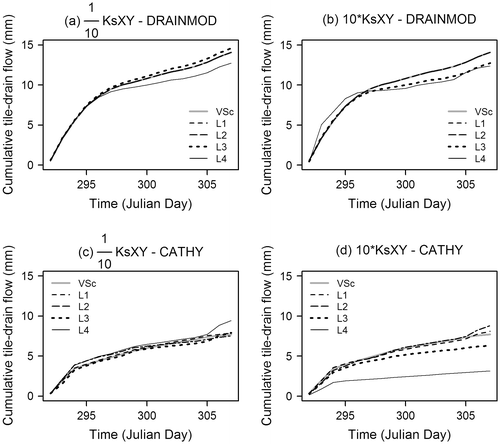Figures & data
Figure 1. Location of tile-drained plot of interest in the Bras d’Henri micro-watershed (the star indicates the outlet).
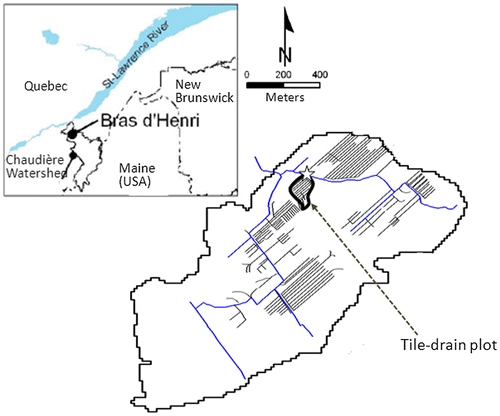
Figure 2. Different scenarios of saturated hydraulic conductivity (KsXY) configurations for soil dynamics models assessment: (a) Scenario 1; (b) Scenario 2; (c) Scenario 3; (d) Scenario 4; (e) Scenario 5; (f) Scenario 6; (g) Scenario 7; and (h) Scenario 8.

Table 1. CATHY soil hydraulic parameters in the porous media.
Table 2. DRAINMOD soil input values.
Table 3. List of drainage design input parameter values.
Table 4. Calibration and validation procedure periods.
Table 5. Model performance statistics.
Table 6. Model maximum and total predicted drain flows and their PEP and PEV values.
Figure 3. DRAINMOD and CATHY simulated tile-drain flow under soil dynamics models assessment using 2012 meteorological data: (a) Scenario 1; (b) Scenario 2; (c) Scenario 3; (d) Scenario 4; (e) Scenario 5; (f) Scenario 6; (g) Scenario 7; and (h) Scenario 8.
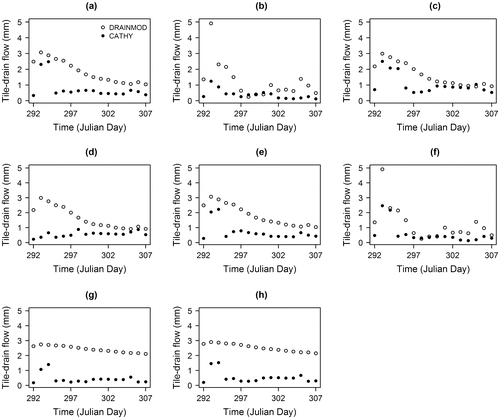
Figure 4. DRAINMOD and CATHY predicted and observed tile-drain flow comparison during calibration process: (a) summer 2011 and (b) fall 2011.

Table 7. Statistical comparison between simulated and observed tile-drain flow for the calibration periods. (TPDF: total predicted drain flow, TODF: total observed drain flow, R²: coefficient of determination, NSE: coefficient of efficiency (Nash), NSEm: modified coefficient of efficiency).
Figure 5. DRAINMOD and CATHY predicted and observed tile-drain flow comparison during validation process: (a) fall 2010; and (b) fall 2012.
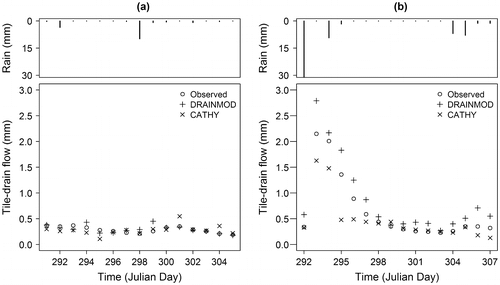
Table 8. Statistical comparison between simulated and observed tile-drain flow for the validation periods. (TPDF: total predicted drain flow, TODF: total observed drain flow, R²: coefficient of determination, NSE: coefficient of efficiency (Nash), NSEm: modified coefficient of efficiency).
Figure 6. DRAINMOD and CATHY predicted tile-drain flows and the uncertainty range (in gray) with an error of ± 20% on observed tile-drain flows: (a) summer 2011; (b) fall 2011; (c) fall 2010; and (d) fall 2012.
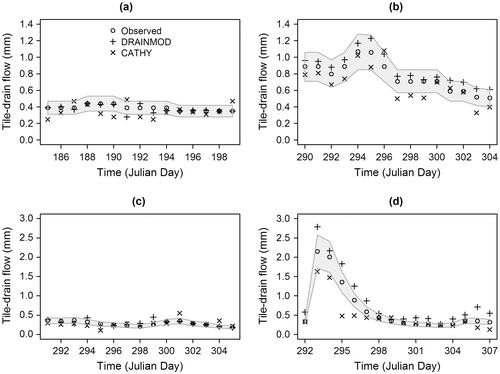
Figure 7. Cumulative PET and cumulative AET simulated by DRAINMOD and CATHY: (a) summer 2011; (b) fall 2011; (c) fall 2010; and (d) fall 2012. (PET: Potential Evapotranspiration, AET: Actual Evapotranspiration).
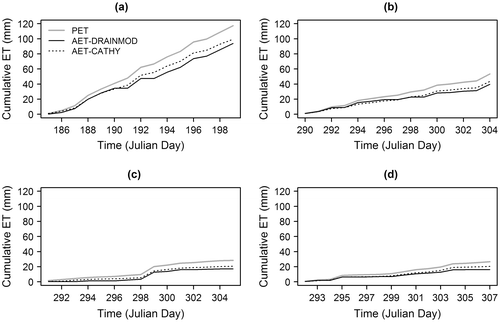
Table 9. Model performance in simulating actual evapotranspiration.
Figure 8. Impact of lateral saturated hydraulic conductivity (KsXY) change in each layer (variation of value of layer 1 (L1), 2 (L2), 3 (L3), 4 (L4)) of the porous media one at a time with respect to the cumulative tile-drain flow: (a) 1/10 KsXY – DRAINMOD; (b) 10 KsXY – DRAINMOD; (c) 1/10 KsXY – CATHY; and (d) 10 KsXY – CATHY.
